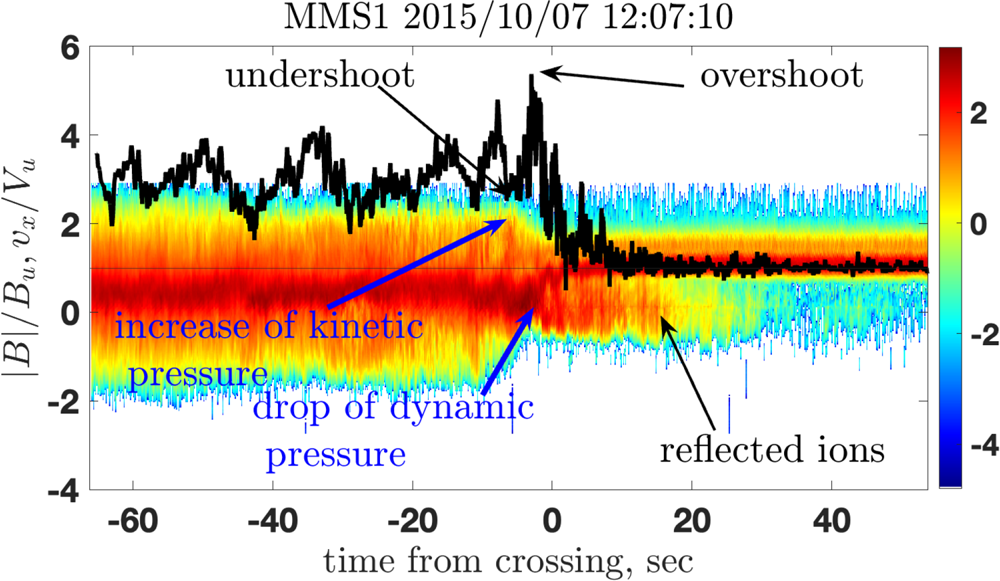A collisionless shock is a self-organized structure where fields and particle distributions are mutually adjusted to ensure a stable mass, momentum and energy transfer from the upstream to the downstream region. This adjustment may involve rippling, reformation or whatever else is needed to maintain the shock. The fields inside the shock front are produced due to the motion of charged particles, which is in turn governed by the fields. The overshoot arises due to the deceleration of the ion flow by the increasing magnetic field, so that the drop of the dynamic pressure should be compensated by the increase of the magnetic pressure. The role of the overshoot is to regulate ion reflection, thus properly adjusting the downstream ion temperature and kinetic pressure and also speeding up the collisionless relaxation and reducing the anisotropy of the eventually gyrotropized distributions.

Full Article:
Gedalin, M. (SHARP), Dimmock, A. (SHARP), Russell, C. (SHARP), Pogorelov, N., & Roytershteyn, V. (2023). Role of the overshoot in the shock self-organization. Journal of Plasma Physics, 89(2), doi: 10.1017/S0022377823000090
License: CC BY 4.0





